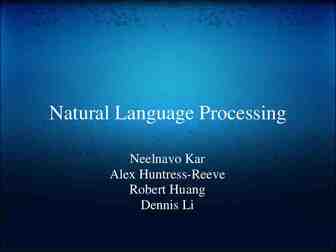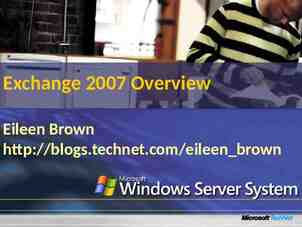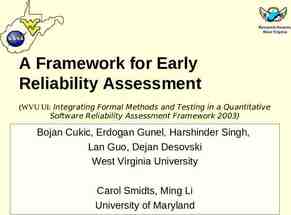EDI in your grant application August 17, 2020
47 Slides795.52 KB

EDI in your grant application August 17, 2020

What is EDI? Three foundational concepts: Equity Diversity Inclusion Four groups designated for specific focus: Women Indigenous peoples Persons with disabilities Members of visible minorities

EDI, the basics: 1. Equity “Equity is the fair and respectful treatment of all people and involves the creation of opportunities and reduction of disparities in opportunities for diverse communities. It also acknowledges that these disparities are rooted in historical and contemporary injustices and disadvantages.”

EDI, the basics: 2. Diversity “Diversity is the demographic mix of the university community and involves recognizing and respecting everyone’s unique qualities and attributes, but focuses particularly on groups that remain underrepresented at Concordia.”

EDI, the basics: 3. Inclusion “Inclusion means creating an environment where everyone feels welcome and respected, focusing on groups that remain underrepresented at Concordia. It means creating the conditions to have the opportunity to fully participate in the University, and where everyone’s talents are valued and celebrated. It is important to note that while an inclusive group is by definition diverse, a diverse group is not always inclusive.” accepts and values d Adapted from University of Toronto Equity and Diversity in Research & Innovation Working Group Report (2018)

EDI Component Weight by Grant NFRF: Pass/Fail Only those applications that pass are reviewed NSERC: Discovery, Alliance - half of “Contribution to the Training of HQP” – but EDI has its own “merit indicator”, so it’s impact on final ranking can be considerable. The goldstandard – for the “exceptional” category of the merit indicator – is “innovative practices that support equity, diversity and inclusion”. RTI is weighted slightly differently. FRQNT: Team application requires EDI to be “integrated throughout” – 5 point weight.

What does this mean for you? Your research project must meaningfully engage members of the four designated groups through the participation of students, postdoctoral fellows, co-principal investigators, co-applicants and/or collaborators, as applicable. Your application must clearly describe the research team’s commitment to this, in particular related to how they will address each of the following three key areas: o team composition and training activities o recruitment processes o inclusion

What does this mean for you? EDI component must be tailored to your project and environment Unlike ethics, e.g., no university-wide “policy” or disclaimer that can just be attached or implemented You need to consider the specific challenges and barriers that are present in your situation (project, department, faculty, field, etc.) Then: concrete measures “to address each of three areas: team composition and training, recruitment, and inclusion” (from NFRF website)

What does this mean for you? “Team Composition” NO YES Dr. A , from Concordia University, is a person with a disability and female; Dr. B , from Université de Montréal, is a person with a disability and male. Two members of the team self-identify as people with disabilities; of whom one selfidentifies as genderfluid and the other as male.

An exception: From the 2020 NFRF Exploration application guide “You can include information about yourself, your lab group and institution, and your team members, their lab groups and institutions in the biographical information about the team. If a team member’s selfidentification (gender, Indigenous identity, disability or racial background) is relevant to the research project, you may include that self-identity information in the biographical information only with their consent. Otherwise, self-identification information about any team member should not appear anywhere in the application.” https://www.sshrc-crsh.gc.ca/funding-financement/nfrf-fnfr/exploration/2020/guide application-guide demande-eng.asp x

“Reviewers considered EDI when selecting their top 25 per cent of applications and selecting the applications to be funded. A tri-agency internal review committee also reviewed the EDI section of applications. This committee looked for at least one concrete measure to address each of three areas: team composition and training, recruitment, and inclusion. Reviewers noted applications that exhibited a meaningful and demonstrated commitment to EDI, indicated by EDI being incorporated and embedded into the team’s activities. Reviewers appreciated teams that encouraged diversity and inclusivity and that articulated commitments to training.” From NFRF Feedback to Applicants: Exploration 2018 http://www.sshrc-crsh.gc.ca/funding-financement/nfrf-fnfr/exploration/2018/feedback to applicants-o bservations destinees aux candidats-eng.aspx

“In addition to best practices in managing EDI in the research environment of a project, it was suggested that applicants be required to identify specific EDI challenges in their situation, with the assumption that no situation is ideal, and present their plan to address it. This will allow applicants to address their particular context and identify the concrete measures they have taken or will undertake to improve it.” From NFRF Co-Chairs’ Report : Exploration 2018 http://www.sshrc-crsh.gc.ca/funding-financement/nfrf-fnfr/exploration/2018/co-chair report-rapport d es copresidents-eng.aspx

Grant application with token EDI Diversity Equity Application Inclusion

Grant application with EDI “incorporated and embedded in the team’s activities” Diversity Equity Application Inclusion

Equity The Practical Points How can opportunities offered by your research program be made equally available to all participants? What systemic barriers and biases exist that impede this? Do members of designated groups – and think intersectionally too – have more, or different, needs in order to access opportunities? Recruiting: candidates may have taken leaves, and/or have diverse and equally valuable research histories (e.g. non-peerreviewed articles on important Indigenous issues), etc. Having been recruited: funding, publishing, conference participation, recognition (within and outside of the university), industry connections, etc.

Diversity The Practical Points Which designated groups – and consider intersectionality – are underrepresented in your specific field/department/program? Tri-council focuses on members of 4 designated groups – women, Indigenous peoples, members of visible minorities, persons with disabilities. You can go beyond this (e.g. LGBTQ2 ) Diversity of trainees Proactive search for trainees – members of underrepresented groups may be more reticent to put themselves forward for a position, even when they feel wholly qualified Diversity of role models – research team and beyond

Inclusion The Practical Points A lot of reflection and work has to go into this aspect What resources are already available at Concordia (e.g. Women in Engineering Concordia, Indigenous Student Recruitment Office)? Can you establish links between your proposed research program and these resources? Mentorship is crucial Consider rates of attrition in your field for members of designated groups (e.g. natural sciences and engineering – 37% women at bachelor level - 12.5% women at full professor level) Concrete responses to ensure all researchers feel they belong – individuals valued, contributions respected, equitable support

Overall Practical Points about EDI Strong leadership commitment to EDI Unconscious bias and EDI training for team members * *Mark Villacorta (Senior Lead, Equity and Inclusion) can tailor unconscious bias training for you and-or your team – see last slide for contact information Open and transparent recruitment Equitable distribution of opportunities Mentorship Procedures for ensuring concerns can be comfortably raised – and adequately addressed Connection to resources at university and in community Concrete measures

What’s wrong with this statement? “Our equitable and transparent research and work environment will ensure underrepresented scientists have confidence that they will be assessed and welcomed based on their merit and excellence and not through a filter of active or unconscious bias. An outcome of this will be to encourage more talented members of underrepresented groups to stay in natural sciences and engineering (NSE) fields. We provide an inclusive environment where there is flexibility and all researchers feel they belong. As a first step, we will be vigilantly aware of unconscious biases and institutional practices that diminish underrepresented applicants’ confidence in their chances of success (as distinct from their confidence in their own qualifications).’ Adapted from NSERC Guide for Applicants: Considering equity, diversity and inclusion in your application, p. 4 It’s not SPECIFIC to your environment. There are no CONCRETE measures to ENSURE the objectives are attained and maintained.

An example phrase: Instead of general: Be specific and concrete: “We provide an inclusive environment where there is flexibility .” “Our research program will provide an environment that is particularly tailored to the flexibility that communitybased Indigenous researchers often need, with adaptable scheduling and the possibility of working off-site when necessary.”

EDI Planning in 4 Steps – The Basics 1 2 3 4 Put together your diverse team Plan training activities Develop equitable recruiting strategies Tailor mentorship and an inclusive climate

In between Step 1 and Step 2 Realistic EDI plans take time and care – and team preparation Review your specific environment Identify specific barriers and opportunities Develop concrete measures to meet and sustain EDI objectives

EDI in your research design – GBA Considering beyond the researchers Your research itself may have potential diversity dimensions CIHR already requires sex and gender to be considered as factors with impact on health research Not all research does have such dimensions, but they are more prevalent than you might initially think Show that you have considered the possibility of diversity dimensions – even if they do not impact your research Gendered Innovations case studies: http:// genderedinnovations.stanford.edu/methods-sex-and-gender-a nalysis.html

Miscellany There are 4 designated groups – consider all of them (and more, including LGBTQ2 ). For NFRF, be sure to check the right boxes – e.g. panel Chairs have noted that several applications involving Indigenous research were not identified as such in the past The OOR has a successful NFRF Exploration application for applicants to review – email Eli Friedland for a copy CRC has released new Best Practices guide for designing an EDI action plan – email Eli Friedland for a copy

Information resources NFRF Best Practices in EDI: https://www.sshrc-crsh.gc.ca/funding-financement/nfrf-fnfr/edi-eng.aspx NSERC Guide for considering EDI in your application (this has many useful links to additional resources): http://www.nserc-crsng.gc.ca/ doc/EDI/Guide for Applicants EN.pdf CRC Best Practices for recruitment, hiring, and retention: http:// www.chairs-chaires.gc.ca/program-programme/equity-equite/best practicespratiques examplaires-eng.aspx NFRF Manual for Multidisciplinary Review Panel: Exploration 2018 – Merit Indicators for Equity, Diversity and Inclusion: http://www.sshrc-crsh.gc.ca/funding-financement/nfrf-fnfr/exploration/2018 /reviewers manual-guide de l evaluateur-eng.aspx#7d

Remember – “Pass” looks like this: Diversity Equity Application Inclusion

For More Information Eli Friedland Associate Advisor, Institutional Research Initiatives, OOR [email protected] Mark Villacorta Senior Lead Equity and Diversity, OPVPA [email protected]

Q&A

1) How do we properly carry out a survey of selfidentification for our groups? Is there a standard survey or form the OOR can provide that we can ask our groups to fill out? Using a form similar to the Canada Research Chairs Program’s Self-Identification Form is likely the best. Two things are important to keep in mind: a) all team members must understand that filling in the form is voluntary; and b) as PI, you must keep the information given to you absolutely confidential unless you have the consent of the team member to disclose it (and then only if it is directly relevant to your research to do so). It’s best to discuss selfidentification with your team during an early, EDI-focused meeting, explaining how the information will be used, and how you will guarantee its confidentiality.

2) If on a team grant with two investigators, one is a woman and one is a man, can the team use the pronouns “she” and “he” to refer to themselves in the grant application (outside of the biographical information section), if those are the preferred pronouns of each one? In such circumstances it is acceptable to use “she” and “he”, even though they would identify who exactly is being spoken of in the context of a two-person team. The agencies do not require pushing this requirement to the point of not using gendered pronouns at all, but please be judicious in availing yourselves of this kind of exception. The point is that you need to make a serious effort to not identify anyone in particular with their demographic information. But there are situations in which the context of a very small team makes that impossible, and that effort does not need to be pushed to the point of absurdity in such situations.

3) From the Inclusion practical points slide, there was an emphasis on describing general trends in a field. This is not always easily available data. Will Concordia be providing resources for us to be able to obtain such information? Field-specific information varies greatly, so it’s necessary to look into your own. Subject-specific librarians at the Concordia Library may be able to direct you to good, upto-date resources: https://library.concordia.ca/about/staff/

4) Does the FRQNT Teams application have a specific EDI section? No, but it is given a 5-point weight during the evaluation process. The two most prominent places to highlight the integration of your EDI principles in the Teams application are in Training Environment and Complementarity of Team Members. FRQNT also has a brief EDI Guideline available.

5) For FRQNT Research Support for New Academics, they have added a section on best practices for EDI in project management. Is this not "graded" per se, though? Yes, it is graded, with a 5-point weight. The instructions are fairly vague, though: Criterion 3: Integration of the principles of equity, diversity and inclu sion in research (5 pts) Efforts put in place to promote equity, diversity and inclusion. It is up to each applicant to choose how to address this criterion through concrete actions, taking into account his or her unique situation. Efforts may involve composition, organization and management, knowledge sharing and dissemination to user communities, etc. FRQNT also has a brief EDI Guideline available.

6) (a) What university resources are there for outreach to under-represented groups (e.g. that group leaders can access for recruitment)? (b) How can researchers find out about what resources are available to support students from under-represented groups? (A) There are a lot of student groups at Concordia that support underrepresented groups. Here is the database (n.b. it is being redesigned and many student groups register in late-August/early-September): http://www.concordia.ca/offices/dean-students/studentgroups.html. Recruiters use this database when attracting students to the university. (B) Some university-run resources include the Aboriginal Student Resource Centre, the Access Centre for Students with Disabilities, and the Concordia University Student Parent Centre. * The OOR has a meeting pending with the Dean of Student’s office. We will have an update on resources available to support students from under-represented groups soon.

7) In NSE fields, research outputs will be mainly publications and presentations. What would be good examples of those categories for equity? One example of equitably evaluating these outputs is to take leaves (parental, disability, etc.) into account during the evaluation process, rather than looking only at an equal stretch of time for all applicants. You might also advertise, on the job posting, that applicants are encouraged to mention (in their cover letter) if, for example, they have experienced slower “production” periods due to disability, parenting, etc., even if these have not been periods of formal leave (see also next question). Please remember though: In general, in the context of recruitment at Concordia, only the following exception permits any questions during a recruitment process that might require an applicant to disclose or discuss their parental or marital status, under Québec human rights legislation: Continued next slide

7) Continued That the selection criterion used allows for an individualized assessment of the applicants. The hiring standard used by the employer must be inclusive and incorporate accommodation measures (a flexible standard reflecting the differences between each applicant should be favoured over a rigid standard completed by quick-fix accommodation measures). ( Application and Interpretation of Section 18.1 of the Charter of H uman Rights and Freedoms ) There are two other, extremely limited circumstances in which an exception might apply (please see the link above, Section 2.1), but their application would generally be highly dubious in a university context. In no other circumstance can you ask questions of this nature during the recruitment process. In the absence of the exceptions mentioned above, such questions are strictly prohibited by Québec human rights legislation. Continued next slide

7) Continued Publications and presentations may also have taken place in lesser-known journals and venues, that are nevertheless important for certain fields – you could encourage applicants to highlight these, and accord them an equitable weighting in your evaluation (rather than, for example, putting a premium only on applicants’ Tier-1 journal publications, H-indices, etc.).

8) If a student does not take a formal leave, how can you treat delays in research? Invite applicants to explain any delays they may have experienced in their research, and make it clear both in the job-posting and during interviews that you will take into consideration both slow-downs and informal leaves related to care-giving, maternity/paternity, parental responsibilities, disabilities, medical-related situations, etc.

9) How can one prevent EDI strategies in grant proposals from becoming all very similar through time (e.g., trying to hit all the “good points”) to the point that render them less important? EDI will evolve but perhaps not fast enough to the same pace in which researchers start using rubber stamp One strategies. cannot necessarily prevent this from happening, and many strategies are broadly applicable. For now, what reviewers want to see is your awareness of the systemic barriers that are most significant to the context of your research program, strategies to counter them that are feasible, and a commitment to ensuring that your program implements those strategies. It may well be that eventually EDI plans will become more and more similar – perhaps even to the point where the agencies simply mandate EDI plans that have been laid out in advance for research programs. For now, though, it’s important to your grant application to tailor your EDI plan to your specific program.

10) For a new researcher submitting to the NSERC Discovery program, the EDI incorporation would focus primarily on future student recruitment, correct? If not, how would we be able to speak to the inclusion strategies of the project with a specific context when you don't know the team composition? New researchers do not need to describe past training of HQP. Your EDI strategies in this case should focus on future recruitment, but also on inclusion strategies for the diverse student team that will result from that recruitment. It is true that you cannot know the specifics of that team composition now, but you need to map out inclusive practices that anticipate the diversity of needs to match the diversity of the team you will attempt to attract to your program.

11) Do we need a chart with the number of HQP in each designation? Is it appropriate to establish equity target numbers and gaps? Or should we focus only on recruiting procedures? No, you do not need such a chart. The focus of your EDI plan should be on recruitment and inclusion strategies; i.e. ensuring not only a diversity of applicants and team members, but also an environment in which members of all groups can fully participate and thrive.

12) Student recruitment is the area where professors have the most control. When we search the database of applicants to look for candidates, gender is not one of the columns or search criteria. It is up to us to recognize names. It would be great if we could build on the recruitment efforts of Concordia toward the 4 designated groups. Agreed, but recruitment efforts need to be geared toward ensuring that the broadest possible diversity of applicants feel that the opportunities you are offering are fully available to them. Students’ demographic data is fully confidential, and the University’s recruitment team also has no access to it, other than in anonymized aggregate form.

13) What are the expected measures to be taken by the granting agencies to check that what was mentioned in an application is indeed taken as an action / actions? Some larger grants have mid-term reporting, and all grants have final reports that researchers must complete. In those reports, you will be expected to confirm that the EDI commitments you made were carried out, and to describe the results of those strategies.

14) Targets/gaps are used internally by Concordia itself (see page 10 of the CRC EDI Action Plan). I had planned to use Concordia’s own EDI action plan as a resource, but is this not advisable? Targets and gaps with respect to representation of the four designated groups are mandated by the Canada Research Chairs Program (CRCP), at the federal level, with each university required to include target/gap information – provided by the CRCP – in its CRCP EDI Action Plan. These targets and gaps are exclusively for CRCs, and do not apply to any other program at Concordia (n.b. the targets mandated by the CRCP are somewhat arbitrary, and are in general very low compared to the Canadian population – please do not use them). There are, however, other sections of this plan that can be helpful for getting direction or ideas for surveying your research “climate”, developing equitable recruitment practices and inclusive environments, etc. Please be sure to tailor these to your specific research program, though, rather than just adopting a university policy. Continued next slide

14) Continued Please remember that under Québec’s human rights legislation, no group – even if it is already overrepresented – may be excluded from any hiring process. Recruitment practices must be designed to include members of under-represented groups, not to reserve positions only for members of those groups.

15) Are there EDI components of CIHR grants? There are no EDI components to CIHR grants right now, but all PIs, co-PIs and co-applicants are required to complete the EDI questionnaire (for the purpose of CIHR collecting EDI-related demographic data from applicants). Apart from that, every proposed project must integrate Sex and Gender Based Analysis (SGBA) and Gender-Based Analysis (GBA ) into its research design when appropriate.







